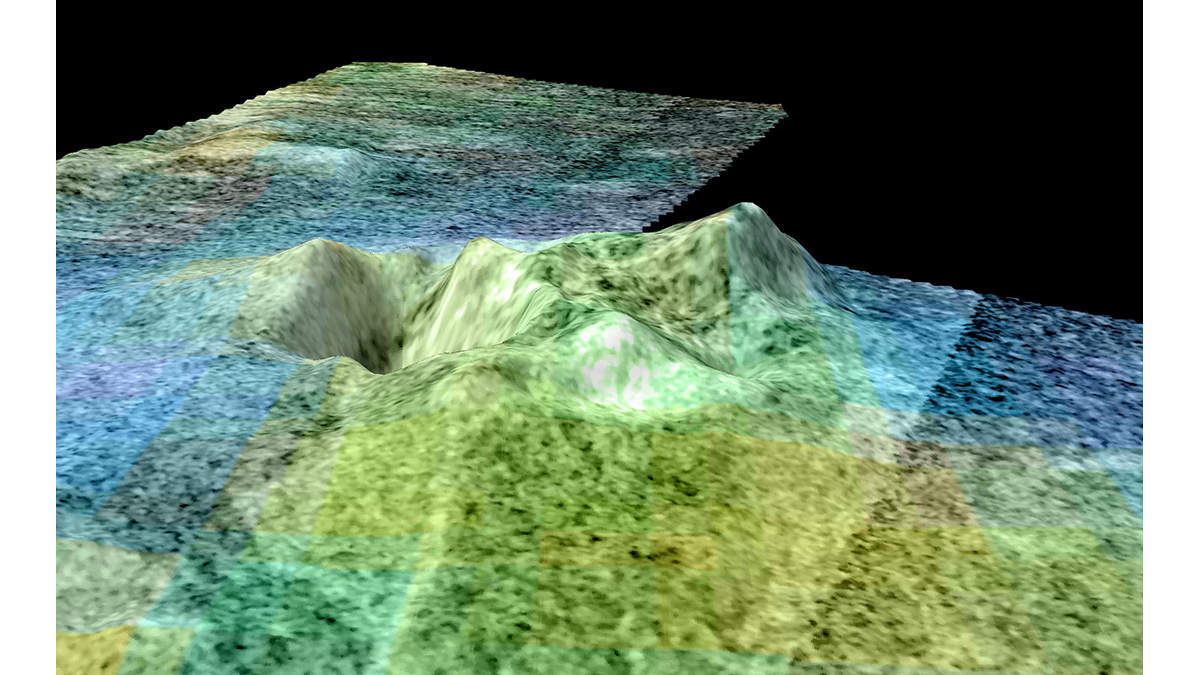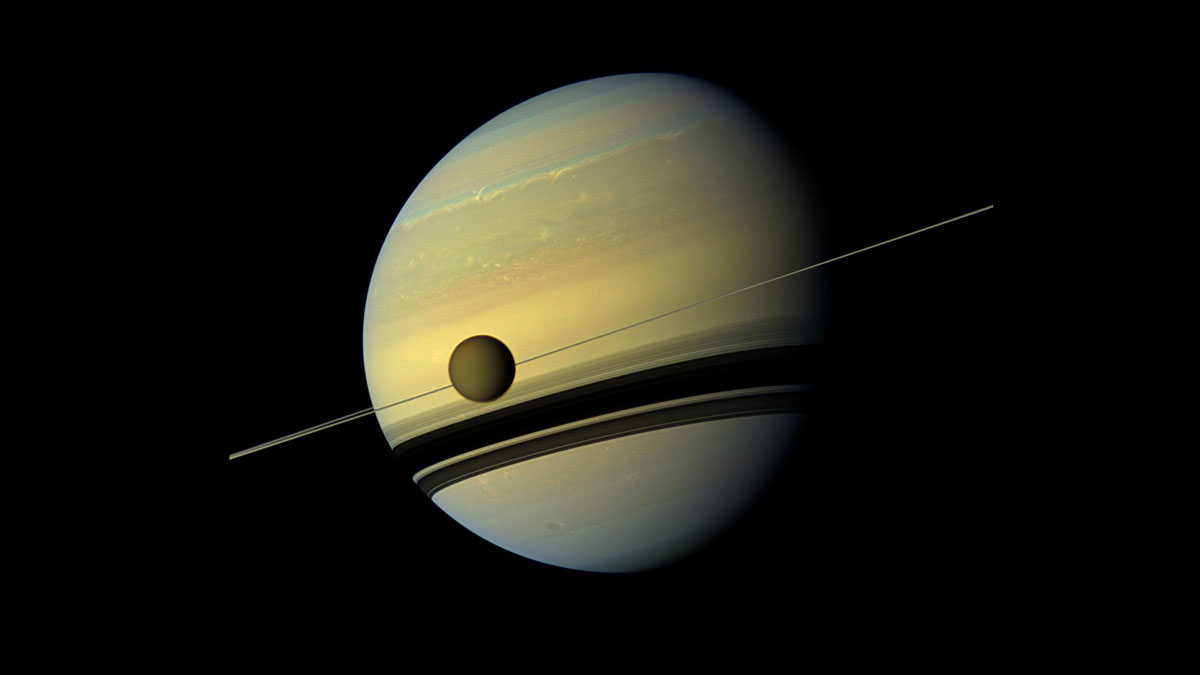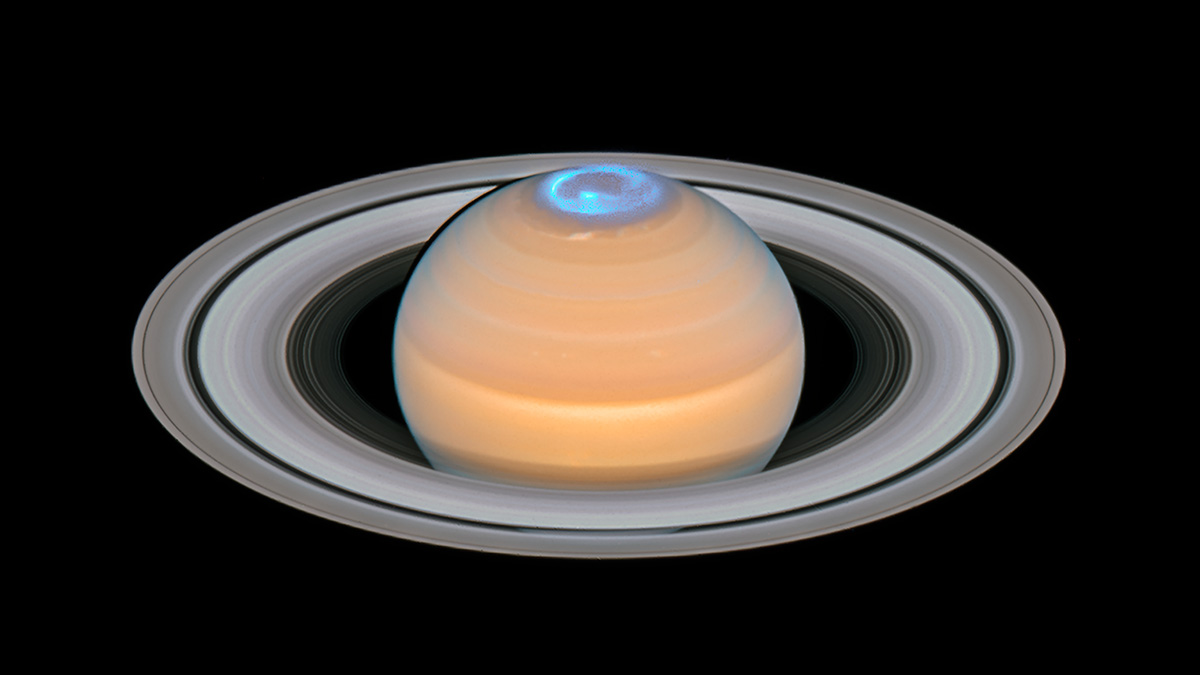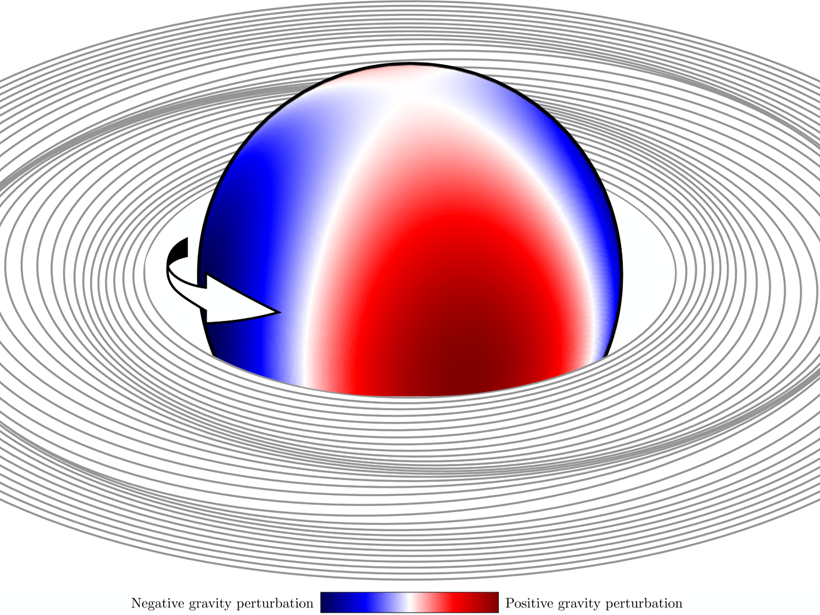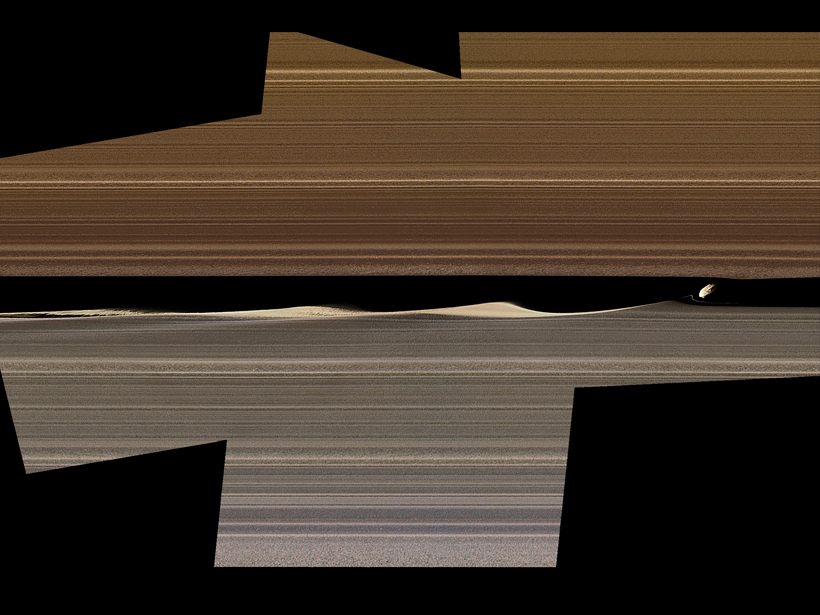The rings are fairly shiny despite being bombarded by dust, indicating that they haven’t been around for very long.
Saturn
Titanic Caves and Where to Find Them
More than 21,000 pits, depressions, and closed valleys on Titan may provide access to underground voids or caves.
Long-Gone Moon Could Explain Birth of Saturn’s Rings
Named Chrysalis, the moon could have disintegrated during a close encounter with the gas giant roughly 100 million years ago.
Saturn’s Powerful Winds Explain Changes in the Length of Its Day
Atmospheric winds moving at more than 7,000 kilometers per hour distort Saturn’s magnetic field, revealing why spacecraft have measured changes in the length of a day on the ringed world.
Saturn’s Dynamo Illuminates its Interior
Saturn’s oddly symmetrical magnetic field can be explained by models in which the active dynamo region is overlain by a thick, stable layer cooled more strongly at the poles.
Electron Density near Enceladus Shows Orbital Variation
The electron density peaks well after the activity of the moon’s distinctive south polar ice plume reaches its maximum, but the cause of the lag remains puzzling.
Using Saturn’s Rings as a Seismometer
The Cassini spacecraft observed spiral density waves in the rings of Saturn which can be used to probe its interior structure and rotation.
New Type of Storm Spotted on Saturn
In 2018, four massive storms formed near the planet’s north pole, interacting with each other and affecting a full latitudinal band.
Newly Discovered Electric Current System Very Close to Saturn
In the tightly confined region between the innermost ring and the planet’s upper atmosphere, the Cassini spacecraft observed signatures of a previously undetected current system.
The Cassini Mission May Be Over, but New Discoveries Abound
New analysis of high-resolution images shows ring textures and disruptions within Saturn’s rings in unprecedented detail.


